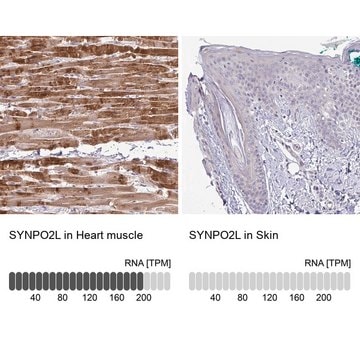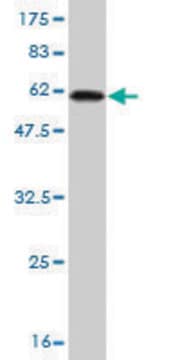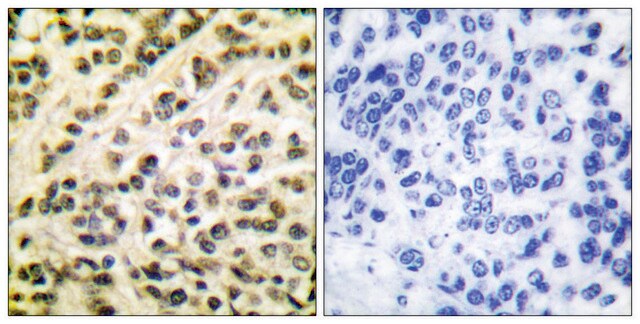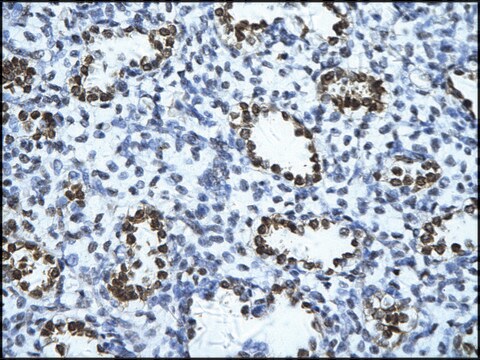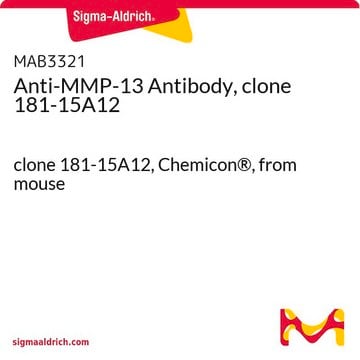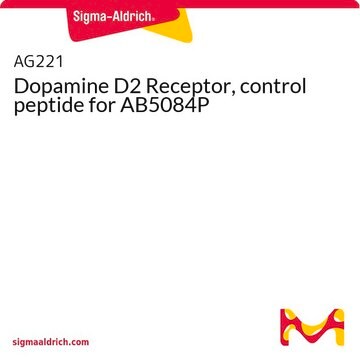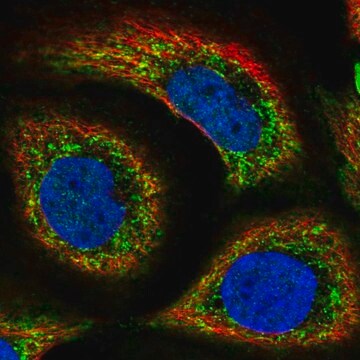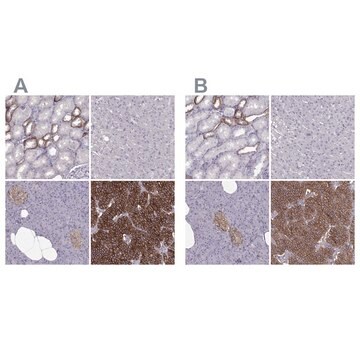HTS209RTA
Ready-to-Assay LPA 5/GPR92 Lysophospholipid Receptor Frozen Cells
Human
Autenticatiper visualizzare i prezzi riservati alla tua organizzazione & contrattuali
About This Item
Codice UNSPSC:
41106514
eCl@ss:
32011203
NACRES:
NA.76
Prodotti consigliati
product name
Ready-to-Assay LPA 5/GPR92 Lysophospholipid Receptor Frozen Cells,
Origine biologica
human
Produttore/marchio commerciale
Ready-to-Assay
tecniche
calcium flux assay: suitable
N° accesso NCBI
Metodo di rivelazione
fluorometric
Descrizione generale
Millipore′s Ready-to-Assay GPCR frozen cells are designed for simple, rapid calcium assays with no requirement for intensive cell culturing. Millipore has optimized the freezing conditions to provide cells with high viability and functionality post-thaw. The user simply thaws the cells and resuspends them in media, dispenses cell suspension into assay plates and, following over night recovery, assays for calcium response.
Lysophosphatidic acid (LPA) is a lysophospholipid produced by activated platelets that inhibits adenylate cyclase and stimulates DNA synthesis, changes in cell morphology, and increases in intracellular calcium in a variety of cultured mammalian cells. A growing family of GPCRs mediates the biological effects of LPA. The first LPA receptors described, LPA1-3, share relatively high sequence similarity and are related to the sphingosine 1-phosphate receptors S1P1-5 (Contos et al., 2000). Two more recently characterized LPA receptors, LPA4 and LPA5, are related to each other but are more distantly related to LPA1-3. LPA5, originally known as GPR92, mediates LPA-induced cytoskeletal changes, intracellular calcium flux and increased cAMP by coupling to G12/13, Gq, and Gs. (Lee et al., 2006). In addition to binding LPA, LPA5 is also activated by several other lipid-derived molecules, the most potent of which is farnesyl pyrophosphate (Oh et al., 2008). GPR92 is expressed in several tissues, most prominently in the CD8+ intraepithelial lymphocytes of the gastrointestinal tract (Kotarsky et al., 2006). Millipore′s cloned human LPA5-expressing cell line is made in the Chem-1 host, which supports high levels of recombinant LPA5 expression on the cell surface and contains high levels of the promiscuous G protein Gα15 to couple the receptor to the calcium signaling pathway. Thus, the cell line is an ideal tool for screening for agonists, antagonists and modulators at LPA5.
Lysophosphatidic acid (LPA) is a lysophospholipid produced by activated platelets that inhibits adenylate cyclase and stimulates DNA synthesis, changes in cell morphology, and increases in intracellular calcium in a variety of cultured mammalian cells. A growing family of GPCRs mediates the biological effects of LPA. The first LPA receptors described, LPA1-3, share relatively high sequence similarity and are related to the sphingosine 1-phosphate receptors S1P1-5 (Contos et al., 2000). Two more recently characterized LPA receptors, LPA4 and LPA5, are related to each other but are more distantly related to LPA1-3. LPA5, originally known as GPR92, mediates LPA-induced cytoskeletal changes, intracellular calcium flux and increased cAMP by coupling to G12/13, Gq, and Gs. (Lee et al., 2006). In addition to binding LPA, LPA5 is also activated by several other lipid-derived molecules, the most potent of which is farnesyl pyrophosphate (Oh et al., 2008). GPR92 is expressed in several tissues, most prominently in the CD8+ intraepithelial lymphocytes of the gastrointestinal tract (Kotarsky et al., 2006). Millipore′s cloned human LPA5-expressing cell line is made in the Chem-1 host, which supports high levels of recombinant LPA5 expression on the cell surface and contains high levels of the promiscuous G protein Gα15 to couple the receptor to the calcium signaling pathway. Thus, the cell line is an ideal tool for screening for agonists, antagonists and modulators at LPA5.
Descrizione della linea cellulare
- GPCR Cell Lines
- Host cells: Chem-1
Applicazioni
Human LPA5 / GPR92 GPCR frozen cells for Calcium Flux FLIPR Assays.
Azioni biochim/fisiol
- GPCR Class: A
- Protein Target: LPA5 / GPR92
- Target Sub-Family: Lysophospholipid
Componenti
Pack contains 2 vials of mycoplasma-free cells, 1 ml per vial.
Fifty (50) mL of Media Component.
Fifty (50) mL of Media Component.
Esclusione di responsabilità
This product contains genetically modified organisms (GMO).
Within the EU GMOs are regulated by Directives 2001/18/EC and 2009/41/EC of the European Parliament and of the Council and their national implementation in the member States respectively.
Codice della classe di stoccaggio
10 - Combustible liquids
Classe di pericolosità dell'acqua (WGK)
WGK 1
Punto d’infiammabilità (°F)
Not applicable
Punto d’infiammabilità (°C)
Not applicable
Certificati d'analisi (COA)
Cerca il Certificati d'analisi (COA) digitando il numero di lotto/batch corrispondente. I numeri di lotto o di batch sono stampati sull'etichetta dei prodotti dopo la parola ‘Lotto’ o ‘Batch’.
Possiedi già questo prodotto?
I documenti relativi ai prodotti acquistati recentemente sono disponibili nell’Archivio dei documenti.
Il team dei nostri ricercatori vanta grande esperienza in tutte le aree della ricerca quali Life Science, scienza dei materiali, sintesi chimica, cromatografia, discipline analitiche, ecc..
Contatta l'Assistenza Tecnica.
